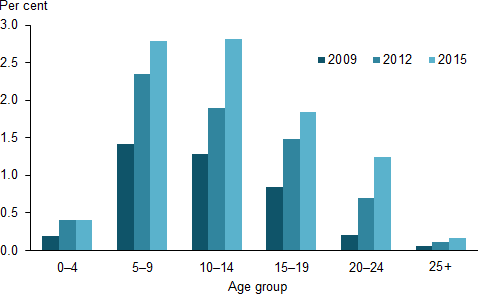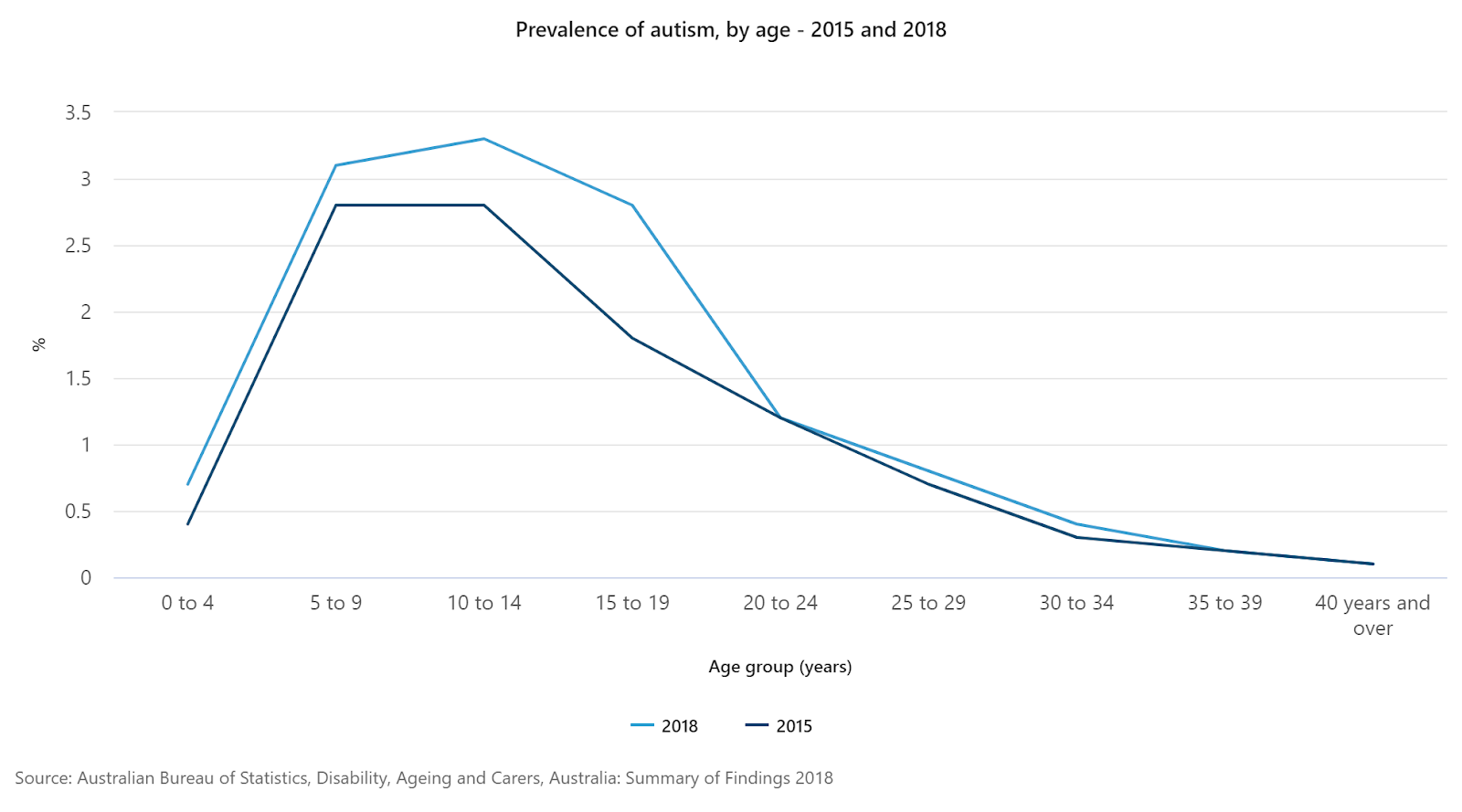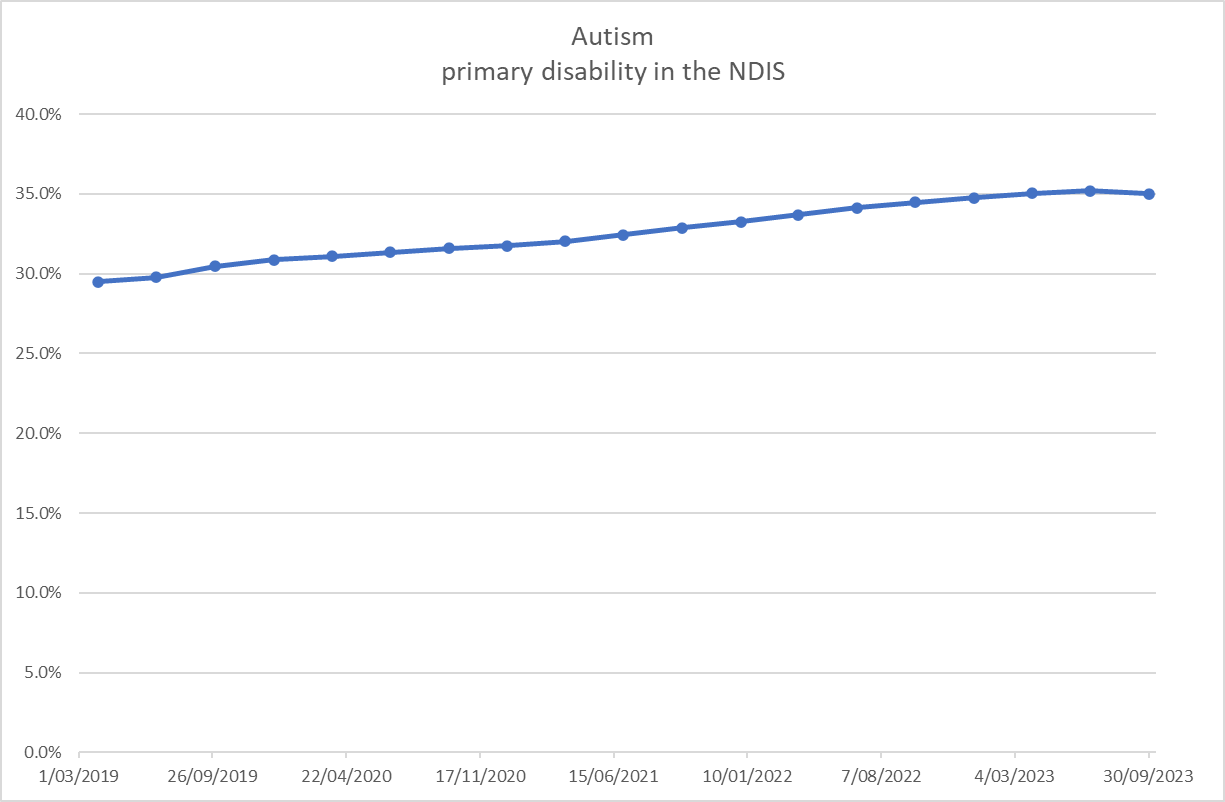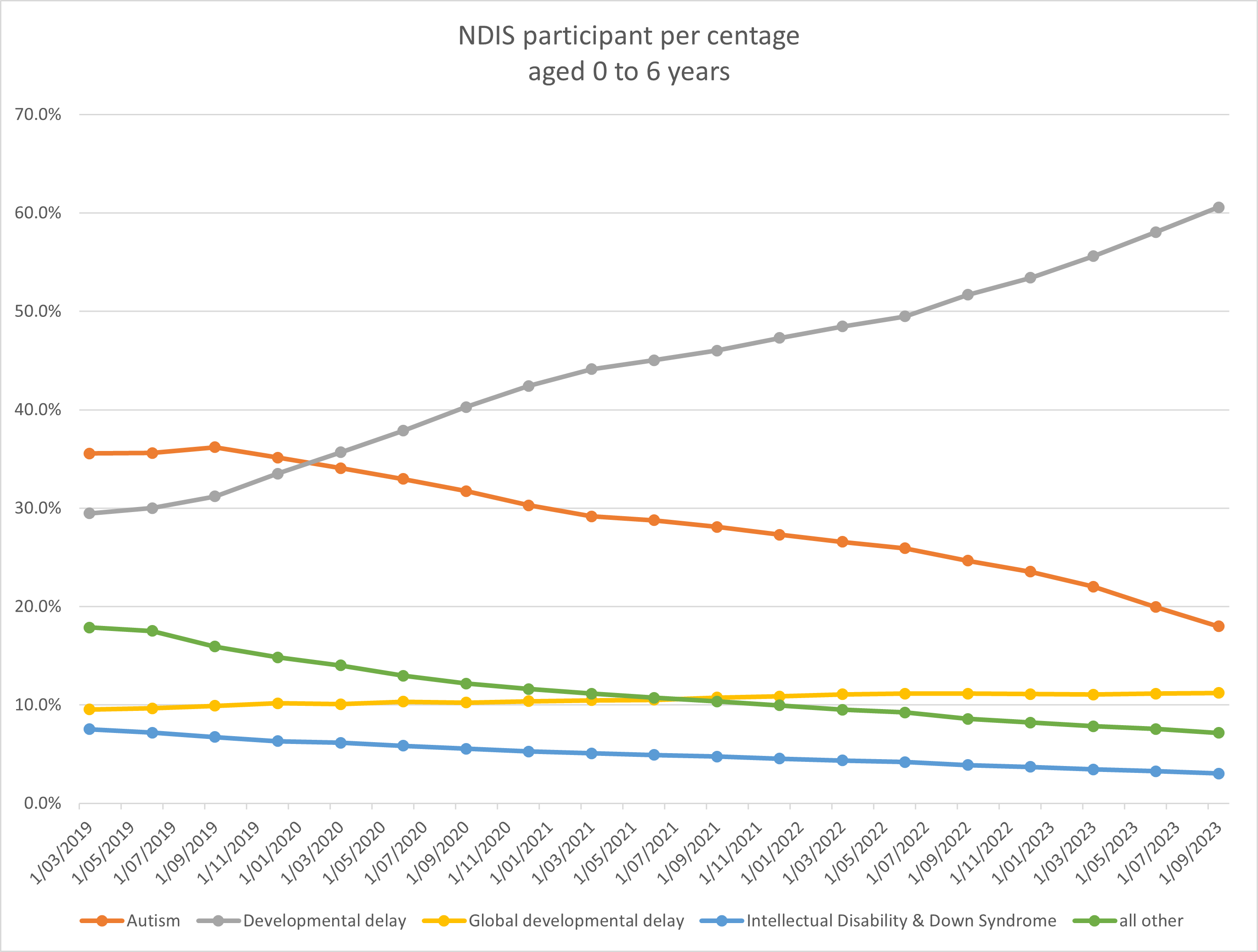Bob Buckley
Research indicates that diagnosis rates for autism in Australia have been increasing for some time.
There are people who claim autism is over-diagnosed in Australia.
In 2005, several paediatricians published their claims that
58% of surveyed psychiatrists and paediatricians indicated that, in the face of diagnostic uncertainty, they had erred on the side of providing an ASD diagnosis for educational ascertainment and 36% of clinicians had provided an autism diagnosis for Carer's Allowance when Centrelink diagnostic specifications had not been met.
This is an extremely high rate of questionable diagnostic practice being reported. It is not consistent with other reports (see Government not intending its autism over-diagnosis claim from 2016).
Since 2005, diagnosis rates for people on the autism spectrum have continued to rise … so either questionable diagnostic practice has massively escalated, or there are other explanations.
In 2011, the prestigious journal, Nature, published the autism prevalence puzzle about rising diagnosis rates for autism. It says
It seems this has not changed a decade later.
A Latrobe University study using data from 2010-2012 estimated 0.74% children under 7 years diagnosed were diagnosed autistic … which means at least double that rate, 1.48% of 7 year old children, were autistic at that time.
In 2016, an article in the Australian provoke commentary from A4 - see https://a4.org.au/node/1218
In 2017, the AIHW used data from the ABS SDAC to produce a report that includes the following figure that shows substantial increases in diagnosis rates over 2009-2015:

And Professor Andrew Whitehouse, Senior Principal Research Fellow at the University of Western Australia's Telethon Kids Institute, said that "Australia’s autism diagnosis rate was now in line with other countries at around 1.1 per cent". This is not consistent with most reports that show diagnosis rates vary over time and by age; the claim that autism prevalence is 1.1% is not consistent with most reports on autism diagnosis rate.
A4 discussed related issues in an online article: Concerns arise from 2015 ABS disability survey results.
There were suggestions that (Bill Shorten's implementation of) John Howard’s Helping Children with Autism (HCWA) package (from 2007 to 2013) encouraged increasing autism diagnoses, but a closer view of the data indicated bigger increases were observed in the age group that was not eligible for HCWA funding.
In 2018, the Australian Bureau of Statistics last published data showing its estimated numbers of autistic Australians.

Autism diagnosis rates (not prevalence) increase again from 2015 to 2018. The ABS website says the next dataset in the series will be published in June 2024.
Autism and the NDIS
Unfortunately, we do not know enough about autism in the NDIS. There is very little reliable data about the number of Autistic Australians since “full roll-out” of the NDIS was achieved.
The overall proportion of NDIS participants with “autism” as their primary disability is shown below.

The pattern is not consistent across age groups. The change in autism participation rates in the NDIS for the reported age groups is shown below.


The most notable feature of these data is that the proportion of autistic children aged 0 to 6 years has declined significantly from a peak of 36% to under 20% of NDIS participants in this age range.
The biggest increase is for participants in the age range 15-24 years. The 15 to 18 year range is likely to level off while the 19 to 24 year age range will continue to grow … and the 25 to 34 year age range will start increasing more quickly.
While 7 to 14 year old NDIS participants are mostly autistic, the increase in numbers is more moderate … from 62% to almost 70%. And the next age group, 15 to 18 year old children is closing the gap.
Recent scuttlebutt
The media has recently reported Ms Rajan, an actuary on study leave from the NDIS, made several recent claims in several articles.
- Bloated NDIS encourages providers to keep children in care: experts (AFR, 4/9/2023)
- Australia’s record high autism rates ‘plausibly’ linked to NDIS (AFR, 12/11/2023)
- The unique factor that could explain why autism rates in Australia are growing faster than the global average (Age, 12/11/2023) or in the SMH.
- New report investigates financial incentives behind rise in autism diagnoses
Following the article in the AFR 4/9/2023, A4 obtained assurances that the views expressed were not from the NDIS (see https://a4.org.au/node/2573). Despite these assurances, the article sent initially to the media showed affiliations with the Australian National University & National Disability Insurance Agency (see the link to the embargoed version below). The subsequent version of the paper (or see link below) does not list her NDIS affiliation (though that comes after the metaphoric horse had bolted).
The related article, Ranjan, M., Lowe, A. (2023). Providing better support for children with autism and developmental delay. Actuaries Institute. Sydney fails to describe the issues and concerns, or offer constructive approaches to tackling them.
There are numerous concerns about the negative reporting about autism in the mainstream media.
- People who write about this must be very clear that diagnosis rate is not “prevalence”.
- Autism diagnoses are increasing in most parts of the world - increasing autism diagnoses is not peculiar to Australia. This report shows increasing diagnosis rates in Australia which is well known (for example, see Autism Spectrum Disorder in Australia, a report A4 recently provided to the National Autism Strategy development).
- Ms Rajan’s paper claims “This suggests growth in prevalence in Australia could be steeper than that observed in Japan”, but the trend line in Figure 4 in the paper shows growth in diagnoses is at the same rate; it just starts from a slightly higher initial point.
- The paper claims “estimates below the trendline are from national survey data, which peak bodies believe underestimate true prevalence” without reference. Be assured national autism bodies or peak bodies have not articulated such a belief. Notably, careful reading of the figure shows national survey data from both the USA and Australia are in the same range.
- The paper does not reference other higher-than-expected autism rates such as those observed previously in South Korea.
- There is little or no financial incentive for families to get a child on the NDIS because funds go for disability services - it would be hard to use NDIS funds for anything else.
- It is easier to get on the NDIS with a diagnosis other than autism - autism would be the last choice as a fake an autism diagnosis
In the wake of all this, Mr Shorten, Minister for the NDIS, told the ABC RN Breakfast program (starts 1:05:36 in) that
People with autism would be the largest cohort on the NDIS, it’s north of 200,000.
This demand is larger than anyone foresaw.
It is not true that “demand [for autism services & supports] is larger than anyone foresaw”: multiple people in the autism sector advised the NDIS and the Ministers that their autism estimates were wrong from the outset. But they chose to not listen.
A4, then recognised autism DRO, has not been granted a meeting with an NDIS Minister in over a decade. They just will not hear about autism.
Conclusion
Reports of Australia having the fastest increases in autism diagnosis rates are likely exaggerated. National data indicates that Australia’s autism diagnosis rates are similar to comparable countries, though we may have better data.
The ABS will publish the next in a series of national data by June 2024.
see also:
| Attachment | Size |
|---|---|
| EMBARGOED TO NOV 13 - Understanding Autism Prevalence.pdf (585.72 KB) | 585.72 KB |
| Understanding_Autism_Prevalence_10Nov2023.pdf (531.49 KB) | 531.49 KB |